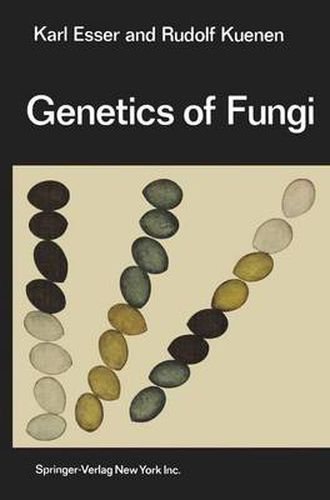Readings Newsletter
Become a Readings Member to make your shopping experience even easier.
Sign in or sign up for free!
You’re not far away from qualifying for FREE standard shipping within Australia
You’ve qualified for FREE standard shipping within Australia
The cart is loading…






This title is printed to order. This book may have been self-published. If so, we cannot guarantee the quality of the content. In the main most books will have gone through the editing process however some may not. We therefore suggest that you be aware of this before ordering this book. If in doubt check either the author or publisher’s details as we are unable to accept any returns unless they are faulty. Please contact us if you have any questions.
The significance of genetics in biology today stems to a considerable extent from the knowledge which has been obtained through the use of fungi as experimental objects. As a result of their short generation time, their ease of culture under laboratory conditions, and the possibil ity of identifying the four products of meiosis through tetrad analysis, the fungi have proven themselves in many ways superior to the classic genetic experimental material such as Drosophila and maize. Because they permit investigation of genetic fine structure as well as biochemical analysis of the function of the genetic material, the fungi can be used, just as the bacteria and bacteriophages, for molecular biological research. Further, the fungi, because of their simple organi zation, are suitable for investigation of the genetic and physiological bases of morphogenesis and of extrachromosomal inheritance. This monograph is an attempt to summarize and interpret the results of genetic research on fungi. The reader should be reminded that review and interpretation of original research are inevitably influenced by the authors’ own opinions. An understanding of the basic principles of genetics is assumed.
$9.00 standard shipping within Australia
FREE standard shipping within Australia for orders over $100.00
Express & International shipping calculated at checkout
This title is printed to order. This book may have been self-published. If so, we cannot guarantee the quality of the content. In the main most books will have gone through the editing process however some may not. We therefore suggest that you be aware of this before ordering this book. If in doubt check either the author or publisher’s details as we are unable to accept any returns unless they are faulty. Please contact us if you have any questions.
The significance of genetics in biology today stems to a considerable extent from the knowledge which has been obtained through the use of fungi as experimental objects. As a result of their short generation time, their ease of culture under laboratory conditions, and the possibil ity of identifying the four products of meiosis through tetrad analysis, the fungi have proven themselves in many ways superior to the classic genetic experimental material such as Drosophila and maize. Because they permit investigation of genetic fine structure as well as biochemical analysis of the function of the genetic material, the fungi can be used, just as the bacteria and bacteriophages, for molecular biological research. Further, the fungi, because of their simple organi zation, are suitable for investigation of the genetic and physiological bases of morphogenesis and of extrachromosomal inheritance. This monograph is an attempt to summarize and interpret the results of genetic research on fungi. The reader should be reminded that review and interpretation of original research are inevitably influenced by the authors’ own opinions. An understanding of the basic principles of genetics is assumed.